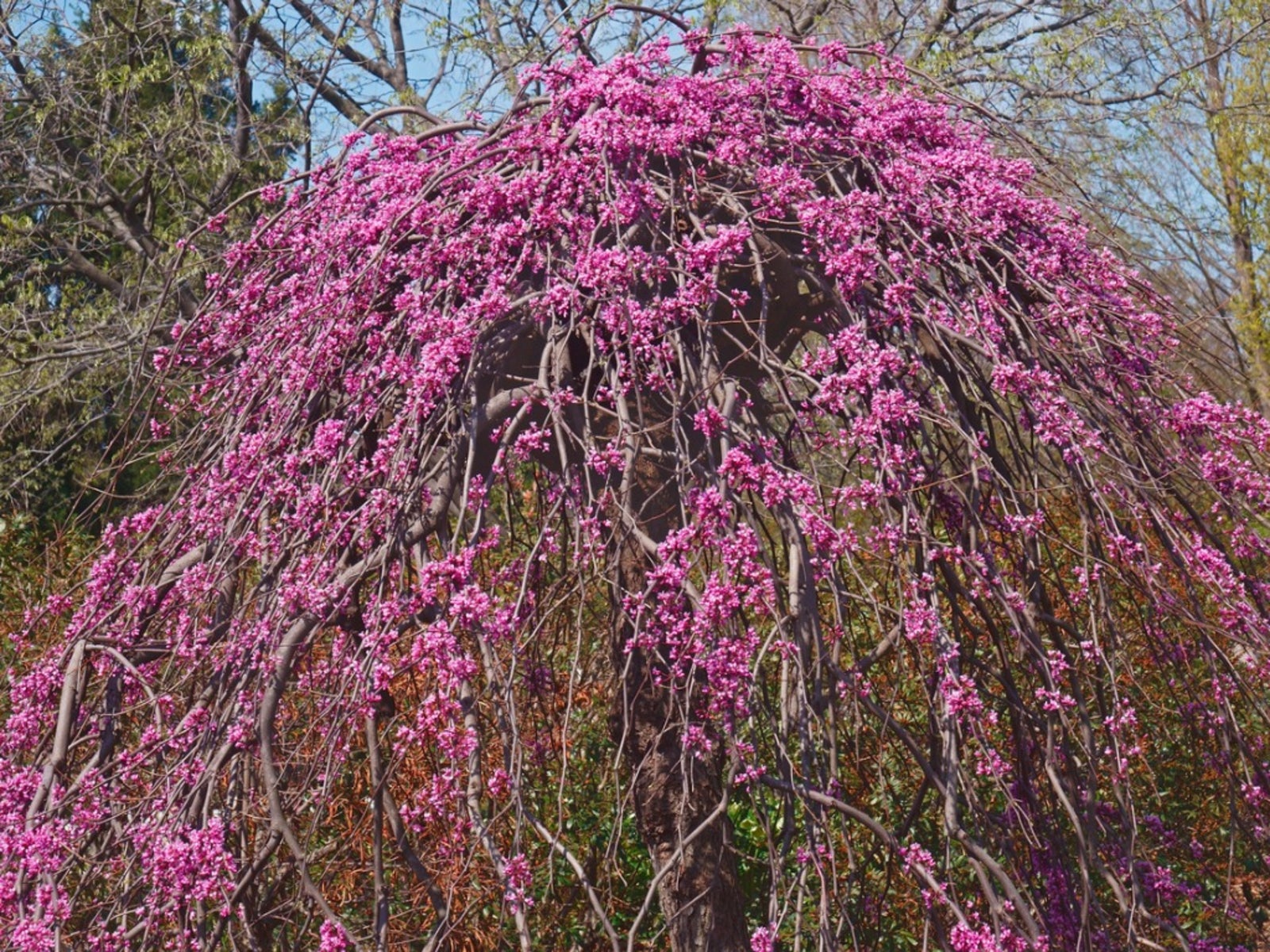Lavender Twist Redbud Care: Growing Weeping Lavender Twist Redbuds


Throughout the southeastern United States, the small purple-rose flowers of the redbud announce the arrival of spring. The eastern redbud (Cercis canadensis) is native to North America, where it can be found growing from parts of Canada down into northern regions of Mexico. It is most common, though, throughout the southeastern U.S. These redbuds have become popular ornamental trees for the home landscape. Many new unique varieties of eastern redbuds have been introduced by plant breeders. This article will discuss the weeping tree variety of eastern redbud known as ‘Lavender Twist.’ Read on for weeping redbud info and tips on how to grow a Lavender Twist redbud.
About Lavender Twist Redbud Trees
Lavender Twist redbud was first discovered in a Westfield, N.Y. private garden of Connie Covey in 1991. Cuttings were taken for propagation by plant breeders, and the plant was patented in 1998. It is also known as the ‘Covey’ eastern redbud. Lavender Twist redbud is a dwarf variety, slowly growing 5 to 15 feet (1.5-5 m.) tall and wide. Its unique attributes include the pendulous, weeping habit and contorted trunk and branches. Like the common eastern redbud, Lavender Twist redbud trees bear small, pea-like pink-purple flowers in early spring, before the tree leafs out. These flowers form all along the tree's cascading, twisted branches and its trunk. The blooms last about three to four weeks. Once the blooms fade, the plant produces bright green heart-shaped foliage. This foliage turns yellow in autumn and drops earlier than most trees. Since Lavender Twist goes dormant earlier than other varieties, it is considered more cold hardy. Their contorted branches and trunk add winter interest to the garden.
Growing Weeping Lavender Twist Redbuds
Weeping Lavender Twist redbuds are hardy in U.S. zones 5 through 9. They grow best in moist, but well-draining soil, in full sun to part shade. In warmer climates, Lavender Twist redbud trees should be given some shade from the afternoon sun. In spring, feed them with a general-purpose fertilizer before blooms appear. They are deer resistant and black walnut tolerant. Lavender Twist redbuds also attract bees, butterflies, and hummingbirds to the garden. Lavender Twist redbud trees can be pruned to shape while dormant. If you wish to have a straight trunk and taller tree, weeping Lavender Twist redbud’s trunk can be staked when the tree is young. When left to grow naturally, the trunk will be contorted, and the tree will grow shorter. Once established, Lavender Twist redbud trees do not transplant well, so select a site where this beautiful specimen tree can shine in the landscape for many years.
Gardening tips, videos, info and more delivered right to your inbox!
Sign up for the Gardening Know How newsletter today and receive a free copy of our e-book "How to Grow Delicious Tomatoes".
-
 Which Ivy Is Best For A Garden? 7 Varieties Of Ivy To Grow (And 2 To Avoid)
Which Ivy Is Best For A Garden? 7 Varieties Of Ivy To Grow (And 2 To Avoid)Lots of varieties of ivy can complement your garden, provide groundcover, or create a private oasis, but which is best? Explore our top picks for beautiful ivy.
-
 Do Deer Eat Peonies? How To Keep Them Away And Save Your Gorgeous Blooms
Do Deer Eat Peonies? How To Keep Them Away And Save Your Gorgeous BloomsPeonies are not usually favored by deer, but sometimes they go after the young shoots of the plants anyways. Learn how to keep deer away from beautiful blooms.
-
 Tips For Transplanting Redbud Tree
Tips For Transplanting Redbud TreeWhile it’s not a good idea to transplant a mature redbud tree unless absolutely necessary, it is entirely possible to dig up seedlings to transplant into your landscape. Read on for tips for transplanting redbud trees.
-
 Growing Oklahoma Redbud: How To Plant An Oklahoma Redbud Tree
Growing Oklahoma Redbud: How To Plant An Oklahoma Redbud TreeOklahoma redbud trees offer dramatic spring blossoms, purple seedpods, and shiny foliage. For information on Oklahoma redbud trees, click the following article.
-
 Cutting Back Redbuds: How And When To Prune A Redbud Tree
Cutting Back Redbuds: How And When To Prune A Redbud TreeRedbuds are lovely small trees for gardens and backyards. Pruning a redbud tree is essential to keeping the tree healthy and attractive. If you want to know how to prune redbud trees, the information in this article can help.
-
 Forest Pansy Tree Care – Tips On Growing A Forest Pansy Tree
Forest Pansy Tree Care – Tips On Growing A Forest Pansy TreeForest Pansy trees are a type of eastern redbud. The tree gets its name from the attractive, pansy-like flowers that appear in spring. Click this article for more information about the Forest Pansy redbud, including Forest Pansy tree care.
-
 Growing Redbud Trees: How To Care For A Redbud Tree
Growing Redbud Trees: How To Care For A Redbud TreeGrowing redbud trees is a great way to add brilliant color to your landscape. Click here to learn how to care for a redbud tree.